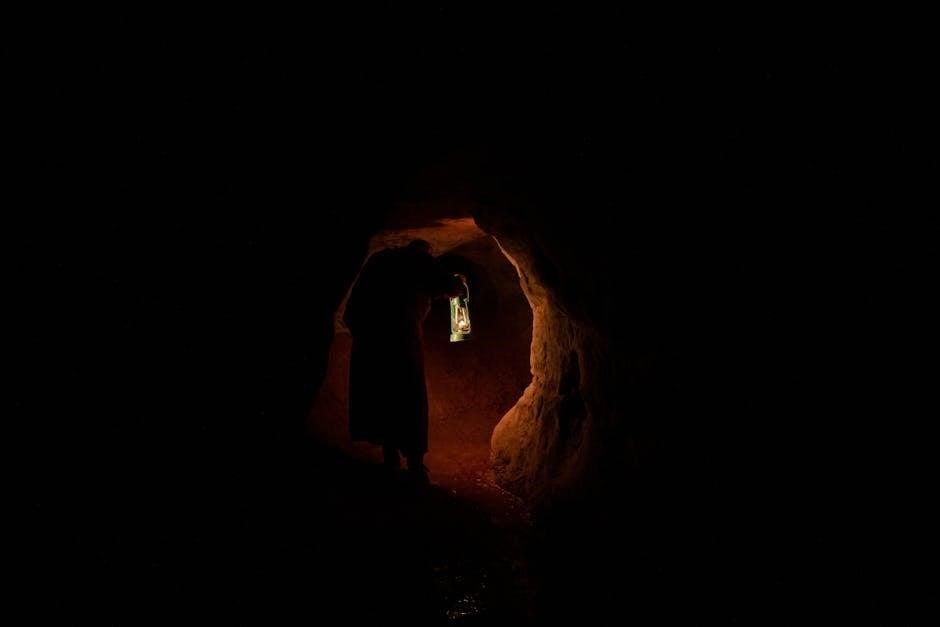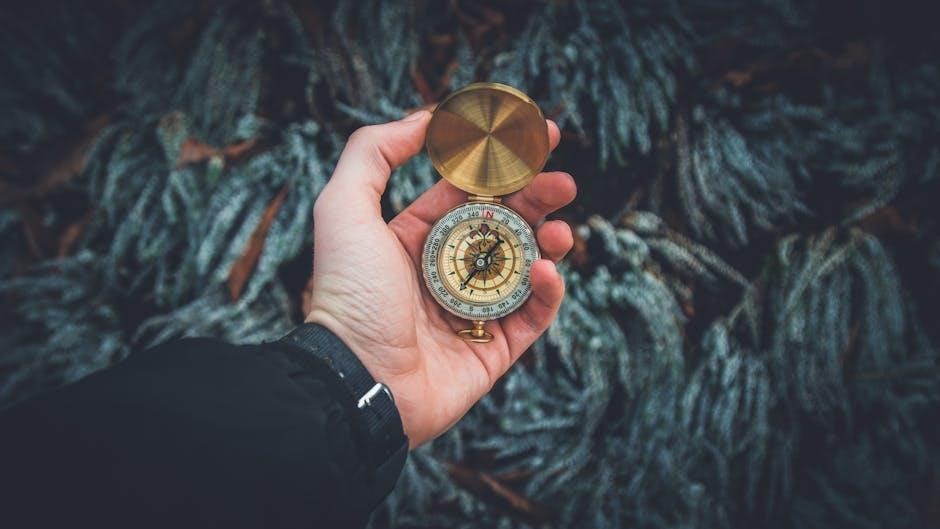Welcome to the comprehensive guide for Pathfinder 2e Monks! This resource provides insights into building effective and enjoyable Monk characters. Explore the intricacies of stances, abilities, and skills to unleash your inner warrior. Discover how to optimize your Monk for combat and teamwork.
The Monk in Pathfinder 2nd Edition stands apart as a master of unarmed combat, emphasizing agility, discipline, and inner strength. Unlike Fighters who rely on arms and armor, Monks achieve mastery by honing their bodies into formidable weapons. They are known for their mobility, evasion, and unique fighting styles, represented through various stances. Monks often use specialized Monk Weapons, but their true power lies in their unarmored prowess.
This class offers a dynamic playstyle, blending martial arts with spiritual ki abilities. Players can customize their Monk with diverse feats and archetypes, creating characters that excel in offense, defense, or support roles. The Monk’s ability to reach Legendary in Unarmored Defense makes them exceptionally resilient, especially with strategic investments in explorer’s clothing or bracers of armor.

Whether you’re inspired by pop culture martial artists or crafting a unique character, the PF2e Monk provides a rewarding experience. Embrace the challenge, explore the possibilities, and forge your path to enlightenment through martial skill.
Key Monk Abilities and Skills
Monks in Pathfinder 2e possess a unique blend of abilities and skills that define their combat prowess and versatility. Unarmored Defense is paramount, allowing Monks to achieve exceptional AC without armor. This ability scales significantly, eventually reaching Legendary proficiency. Flurry of Blows is another cornerstone, enabling Monks to make multiple attacks in rapid succession, maximizing damage output. Ki Strike enhances unarmed attacks, adding magical or elemental properties to overcome resistances.
Stunning Fist offers a chance to incapacitate foes, while various stances grant specialized combat maneuvers and defensive benefits. Skills like Acrobatics and Athletics are crucial for mobility and traversal, complementing the Monk’s agility. Perception is vital for awareness, while skills like Diplomacy or Intimidation can be useful in social situations. Ki spells and abilities provide additional utility, from healing to elemental attacks.
Feats further customize the Monk, allowing players to focus on specific combat styles, enhance defensive capabilities, or expand ki-based powers; Strategic use of these abilities and skills allows Monks to excel in various combat scenarios and contribute significantly to their party’s success.
Stance System Overview
The stance system is a defining feature of the Pathfinder 2e Monk, offering a dynamic and versatile approach to combat. Stances are special actions that alter the Monk’s fighting style, granting unique benefits and restrictions. Entering a stance typically requires an action, and the Monk remains in that stance until they choose to exit it or enter a new one. Each stance provides a distinct set of advantages, such as increased damage, enhanced mobility, or improved defenses.
Mountain Stance, for example, emphasizes strength and durability, granting additional AC and powerful strikes. Crane Stance focuses on agility and evasion, making the Monk harder to hit. Other stances may offer specialized maneuvers, such as grappling techniques or elemental attacks. Choosing the right stance for a given situation is crucial for maximizing the Monk’s effectiveness.
The stance system encourages strategic decision-making and allows Monks to adapt to different combat scenarios. By carefully selecting and utilizing stances, Monks can control the flow of battle and overcome a wide range of challenges. Furthermore, many Monk feats interact with stances, further enhancing their capabilities and providing additional customization options;

Ability Score Prioritization (Strength vs. Dexterity)
When building a Pathfinder 2e Monk, one of the key decisions is how to prioritize Strength and Dexterity. Traditionally, Dexterity has been favored for its impact on AC, Reflex saves, and attack rolls with finesse weapons. However, Strength-based Monks offer a viable alternative, particularly with stances like Mountain Stance that compensate for lower Dexterity.

Dexterity is crucial for Monks who rely on Unarmored Defense and finesse-based attacks. It enhances their survivability and accuracy. However, investing heavily in Strength allows Monks to deal more damage with unarmed strikes and utilize feats that rely on Strength checks, such as grappling maneuvers.
The choice between Strength and Dexterity depends on the desired playstyle and chosen stances. A balanced approach is also possible, allocating points to both abilities to achieve a mix of offense and defense. Consider the specific benefits offered by different stances and feats when making this decision. Ultimately, the optimal ability score distribution depends on the individual Monk’s build and role within the party.
Unarmored Defense and AC Optimization
One of the Monk’s defining features is their Unarmored Defense, which allows them to achieve impressive AC without wearing armor. This ability relies on the Monk’s Dexterity and Wisdom scores, adding them to their AC alongside their level. Optimizing AC is crucial for Monk survivability, as they often find themselves in the thick of combat.
To maximize Unarmored Defense, prioritize increasing Dexterity and Wisdom. Investing in items that boost AC, such as Explorer’s Clothing or Bracers of Armor, can further enhance the Monk’s defenses. Feats like Mountain Stance offer alternative ways to improve AC, allowing Monks to focus on Strength while maintaining a respectable defense.
Consider the trade-offs between different AC optimization strategies. While high Dexterity provides a solid foundation, feats and items can provide additional layers of protection. Experiment with different combinations to find the optimal balance for your Monk’s playstyle. Remember that AC is only one aspect of defense; consider investing in saves and other defensive abilities to create a well-rounded character.
Monk Weapon Choices and Usage
While Monks are renowned for their unarmed combat prowess, they also have access to a variety of Monk Weapons that can enhance their offensive capabilities. These weapons often have unique properties that synergize with the Monk’s abilities, providing versatile options in combat.
Some popular Monk Weapon choices include the kama, nunchaku, and staff. These weapons offer different damage types and special effects, allowing Monks to adapt to various combat situations. The staff, in particular, can be useful for reach and tripping opponents, while the kama and nunchaku provide options for striking with precision and speed.
When choosing a Monk Weapon, consider its damage type, special properties, and how it complements your Monk’s build. Experiment with different weapons to find the ones that best suit your playstyle. Remember that unarmed attacks remain a viable option, especially when using stances and feats that enhance them. Ultimately, the best Monk Weapon is the one that you are most comfortable and effective with in combat.
Flourish Actions and Combat Economy
Flourish actions are special techniques that Monks can use in combat, but they require careful management due to their limited usage. Each turn, a Monk can only perform one action with the flourish trait. This mechanic introduces an element of strategic decision-making, forcing players to prioritize which flourish action to use based on the current situation.
Effective combat economy is crucial for Monks, as they rely on a combination of actions to maximize their damage output and control the battlefield. Understanding the cost and benefit of each action is essential for optimizing your Monk’s performance. Flourish actions often provide powerful effects, such as increased damage, mobility, or control, but they must be used judiciously to avoid wasting actions.
Consider combining flourish actions with other actions to create powerful combos. For example, a Monk might use a stance to gain a bonus to their unarmed attacks, then follow up with a flurry of blows to deliver a devastating attack. By carefully managing your actions, you can ensure that your Monk is always performing at their peak.
Ki Spells and Abilities
Ki spells and abilities are a core aspect of the Monk class, providing access to a range of magical and supernatural effects. These abilities are fueled by the Monk’s inner energy, allowing them to perform feats of strength, agility, and perception that are beyond the capabilities of ordinary mortals. Ki spells often mimic spell effects, while abilities can bolster the Monk’s martial prowess.
Wisdom is the key ability score for Ki abilities, as it determines the effectiveness of the spells and the number of Ki points available. Monks can use Ki points to power their abilities, allowing them to perform a variety of actions, such as healing themselves, teleporting short distances, or unleashing powerful attacks.
The versatility of Ki spells and abilities allows Monks to adapt to a wide range of situations. They can use Ki to support their allies, control the battlefield, or deal devastating damage to their enemies. Mastering Ki is essential for any Monk who wants to reach their full potential.
Archetype Options for Monks
Pathfinder 2e offers a variety of archetypes that allow Monks to customize their character and expand their capabilities beyond the base class. Archetypes provide access to new feats, skills, and abilities, allowing Monks to specialize in different areas of combat, exploration, or social interaction. Popular archetype options include the Dragon Disciple, which grants access to dragon-themed abilities, and the Martial Artist, which enhances the Monk’s unarmed combat skills.
Other options include Acrobat, Medic, and Marshal, allowing the Monk to lean into skills outside of combat. Archetypes can be gained at the cost of class feats, so it is important to consider what is most important to you. Some archetypes can make the Monk more survivable, while others are more of a boost to damage.
Careful consideration should be given to archetype selection, as it can significantly impact the Monk’s playstyle and effectiveness. By choosing the right archetype, Monks can create a unique and powerful character that is well-suited to their preferred role in the party.
Popular Monk Builds (e.g., Mountain Stance, Crane Stance)

Monks in Pathfinder 2e have access to a variety of stances that define their combat style and provide unique benefits. Two popular options are the Mountain Stance and the Crane Stance.
The Mountain Stance focuses on durability and raw power, allowing Monks to dump Dexterity in favor of Strength and Constitution. This stance provides increased AC and damage output, making the Monk a formidable melee combatant. It is especially effective for Monks who want to focus on grappling and other Strength-based maneuvers.
The Crane Stance, on the other hand, emphasizes agility and finesse. Monks in this stance gain increased mobility and defensive capabilities, making them difficult to hit. This stance is ideal for Monks who want to excel at dodging attacks and positioning themselves strategically on the battlefield.
Ultimately, the best stance will depend on the Monk’s playstyle and the composition of the party. Experimenting with different stances is a great way to discover what works best for you.
Feat Selection Guide for Monks
Choosing the right feats is crucial for optimizing your Monk in Pathfinder 2e. Feats can enhance your combat prowess, improve your skills, and grant you access to unique abilities.
When selecting feats, consider your Monk’s playstyle and the needs of your party. If you’re playing a Mountain Stance Monk, feats that increase your Strength and Constitution will be beneficial. If you’re playing a Crane Stance Monk, focus on feats that improve your Dexterity and mobility.
Some popular feat choices for Monks include Stunning Fist, which allows you to stun enemies with your unarmed strikes, and Flurry of Blows, which grants you an extra attack each turn. Additionally, consider feats that enhance your skills, such as Acrobatics and Athletics.
Don’t be afraid to experiment with different feats to see what works best for you. The Pathfinder 2e system is designed to reward creativity and experimentation.
Monk’s Role in Teamwork and Party Composition
The Monk brings a unique blend of martial prowess, mobility, and utility to any Pathfinder 2e party. Their role in teamwork and party composition can be multifaceted, depending on their chosen stance, feats, and skills.
Monks excel at flanking enemies, disrupting enemy formations, and controlling the battlefield. Their high mobility allows them to quickly engage and disengage from combat, making them ideal for hit-and-run tactics.
In terms of party composition, Monks can fill a variety of roles. They can serve as damage dealers, crowd control specialists, or even support characters with the right feats and skills. Their ability to adapt to different situations makes them valuable assets in any adventuring party.
When working as a team, Monks should communicate with their allies to coordinate attacks and maximize their effectiveness. By utilizing their mobility and unique abilities, Monks can significantly contribute to the success of the party.
